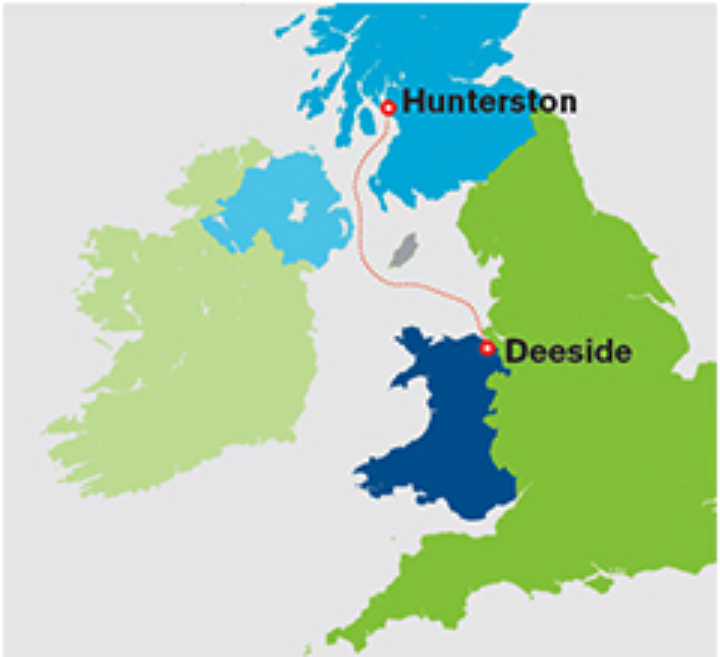Wasting wind – cutting payments to turn off turbines
Modelling from National Grid shows cost of curtailing wind set to slide in 2019
By Jonny Marshall
Share
Last updated:
As regular as clockwork, the New Year brought with it a ‘scoop’ on the travesty of wind constraint payments – money paid to the owners of wind farms to reduce output as part of keeping Britain’s power grid balanced.
Unfortunately, 2018 set a new record for monies paid to wind farms to ‘stop generating’ when output was too much for the grid to handle. Unfortunate because of the cost, but also because an ECIU blog from September detailed (as it turned out, somewhat prematurely) how they were set to fall compared with 2017.
For the first eight months of the year, 2018 payments were below those made during 2017; down 17%, despite British wind farm output increasing by 22%. This ability to curb constraint payments was due to the opening of the Western HVDC link cable that runs from wind-rich Scotland to power-hungry England.

Then - almost as if waiting to be timed with our blog - outages on the link saw payments in September and October surge, propelling the 2018 total to around £125 million.
Of course, British wind output was higher on the year – up 16% to 58 TWh - but had the new link been running all year it is safe to say total payments would have remained lower than in 2017.
Grounds for optimism?
In 2019 there is reason to expect constraint payments to fall. With the Western link fully up and running (and grid operators gaining more experience of running it efficiently with each passing day), there is genuine hope that the lifetime of headlines decrying the scandal of constraint payments is coming to an end.
In its Electricity System Operator (ESO) consultation, released mid-January, National Grid showed how it expects the HDVC link to reduce the overall annual cost of balancing the electricity system by £136.4 million; shaving more than 13% from the total balancing spend were it not operating.
Total balancing spend involves far more than money paid to wind farms, but it is notable that this figure is higher than the entirety of constraint payments made in 2018. It also represents a remarkable return on investment, set to offset the link's £1bn capital cost in less than 7.5 years.
On top of reducing constraint payments, the link will reduce the cost of accommodating Scotland’s 2.6 GW inflexible nuclear power stations that work most efficiently when operating at full output, as well as facilitating the movement of power in the opposite direction should it be needed to minimise the cost of running the grid.
Forecasts they may be, but fortunately they are easy to track. Here at ECIU we’ll be keeping an eye on constraint payments throughout the year – including new data showing bottlenecks that National Grid will begin to publish on a daily basis – and will let you know how it goes.
More than just constraint payments

The ESO document goes into remarkable detail on how the smart grid will work in principle, with a host of new technologies stepping into territory that has historically been the preserve of large, fossil-fuelled power stations.
For example, later this year it is expected that wind farms connected to the national transmission network will be able to take a more active role in balancing the electricity system. Historically pointed to as a major cause of imbalances (mismatches between supply and demand), now wind farms will be able to step in to keep the system ticking over.
On first sight this may seem unimpressive, but a situation in which a wind farm can ‘back-up’ a tripped gas power station is the antithesis of warnings surrounding the relative reliabilities of renewable and non-renewable forms of generation that has been around for years.
Not only this, but the ability to participate in a new market brings with it a new source of revenue; one that utility bean-counters will be totting up as part of the quest to achieve subsidy-free renewables in the UK.
Adding balancing revenues, frequency response and other income streams to that from actually selling electricity will give technologies currently without policy support – onshore wind, for example – a nudge closer to financial viability.
This notion of ‘stacking revenues’ has improved the economics of battery capacity, thereby allowing it to surge. Doing the same for wind farms will only improve the economics of bringing new capacity online.
Big switch
Although technical, the plans revealed in National Grid’s ESO plan describe the changes that many in the industry have been anticipating for years, bringing down the cost of running the system at the same time as incorporating more renewables.
More than that, hopefully it will move ‘wind farms paid to turn off’ headlines closer to the dustbin.
Share